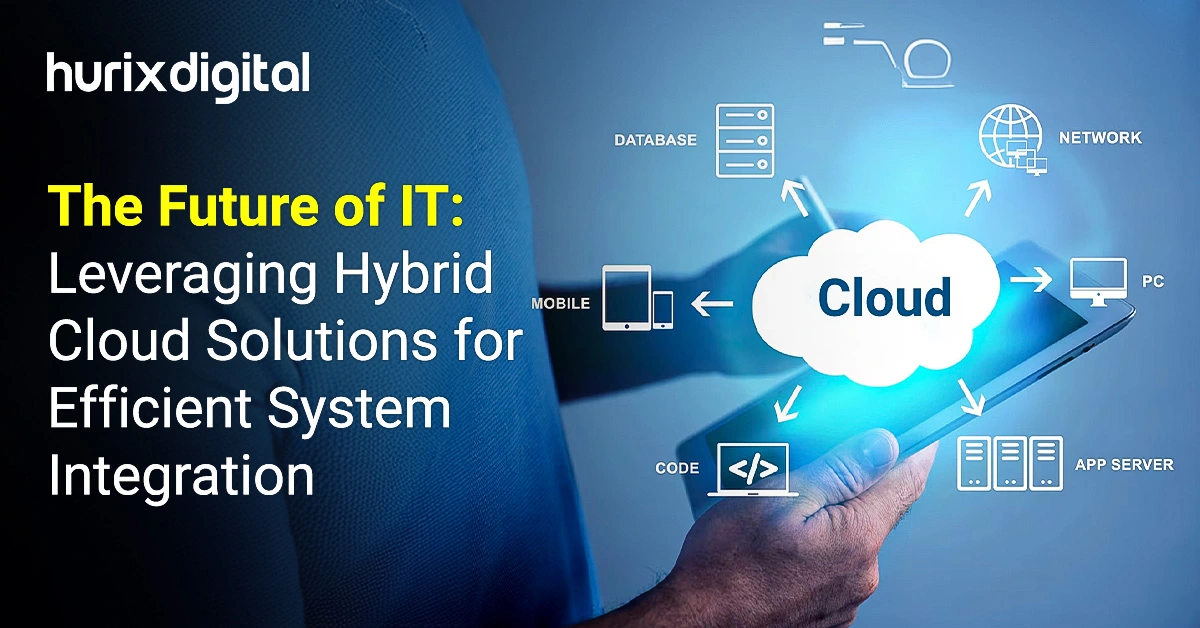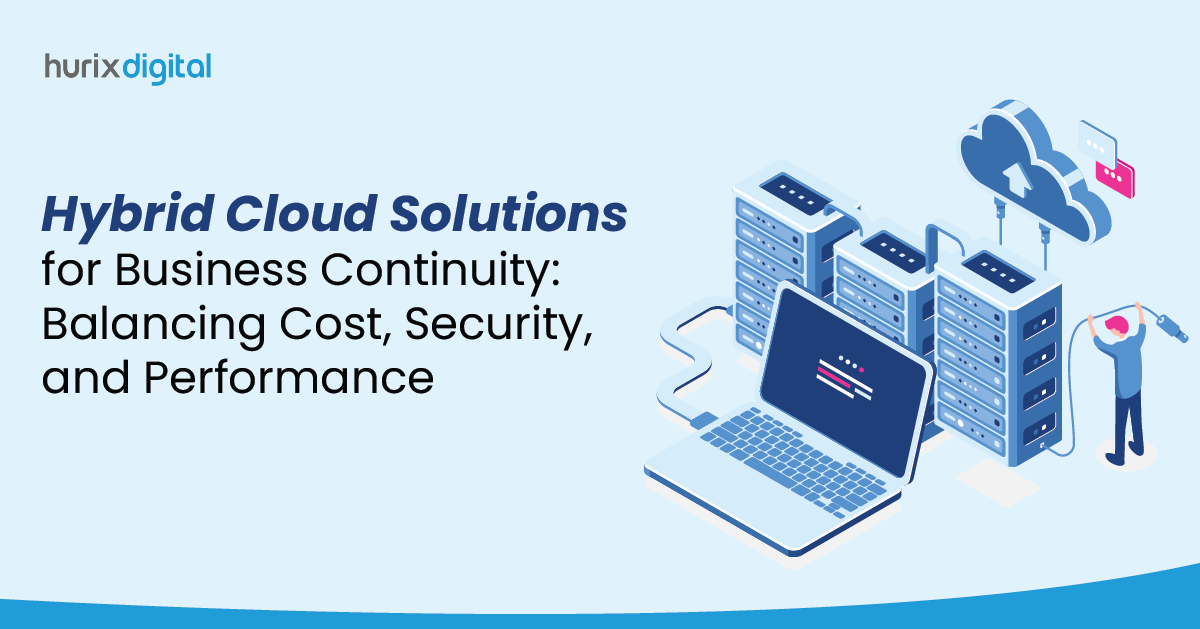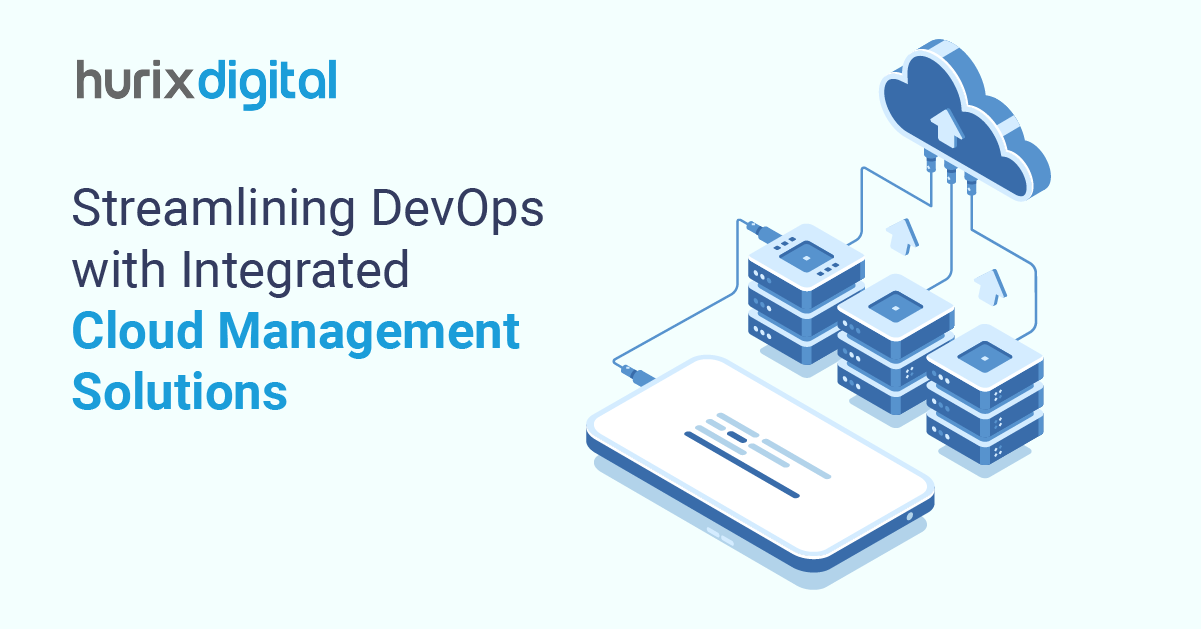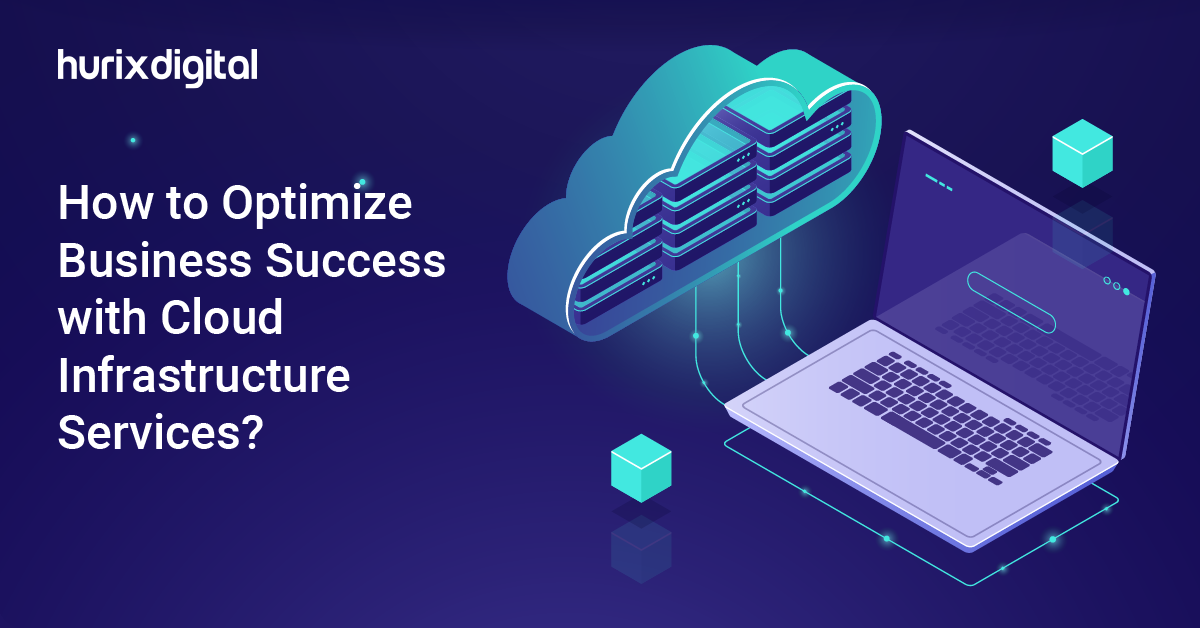
The Future of IT: Leveraging Hybrid Cloud Solutions for Efficient System Integration
Summarize with:
Senior IT authorities are in charge of embracing hybrid cloud solutions to integrate on-premise systems with cloud infrastructure seamlessly. This strategic choice capitalizes on the best features of each environment to achieve flexibility and scalability while preserving fundamental control and security.
Collaboration with leading providers of cloud infrastructure may improve operational efficiency among organizations in dynamically changing business environments.
The adoption of hybrid cloud technologies is more than a trend. With such solutions adopted by 87% of all enterprises, it becomes vital for future-proofing business operations and infrastructure management optimizations.
Table of Contents:
- Understanding Hybrid Cloud Infrastructure
- Optimizing and Managing Your Cloud Infrastructure
- Choosing the Right Cloud Infrastructure Provider
- Challenges in Integrating On-Premise with Cloud Infrastructure
- Final Words
Understanding Hybrid Cloud Infrastructure
A hybrid cloud infrastructure merges the immediacy and security of on-premise systems with the scalability and efficiency of cloud-based services.
This architecture is specifically designed to allow data and applications to interoperate across boundaries, offering flexibility and scalability that traditional infrastructures can’t match.
1. Key Components
Here’s a snapshot of the foundational elements that make hybrid cloud infrastructures both robust and adaptable:
- On-Premise Infrastructure: Robust systems designed for security and data sovereignty.
- Public Cloud Services: Services provided by cloud infrastructure providers that offer scalability and advanced analytics.
- Private Cloud Solutions: Customized environments that provide enhanced control over critical operations.
2. Advantages to Businesses
Here’s how hybrid cloud setups are revolutionizing business efficiency and agility:
- More Flexibility: Businesses can dynamically deploy resources where they are most needed, scaling up during peak demands without incurring huge costs.
- Optimized Costs: By using cloud infrastructure services, businesses pay for resources they consume, which saves them from making significant capital investments in hardware.
- Improved Disaster Recovery: Hybrid models offer superior backup and disaster recovery solutions, which are critical for maintaining operations during unexpected disruptions.
3. Impact on IT Operations
Recent statistics show that 94% of enterprises use some form of cloud service. This high adoption rate underscores the widespread trust in hybrid solutions, which are essential for enhancing business agility and operational resilience.
Here’s how on-premise and cloud environments are converging to streamline IT management and enhance security protocols:
- Efficient Management: The cloud infrastructure management tools support efficient and effective management of cloud-based resources and on-premise systems.
- Security and Compliance: The heterogeneous mix of infrastructures helps IT meet regulatory compliance standards in a manner that adequately secures sensitive data.
Also Read: 12 Emerging Trends in Cloud Managed Services: Predictions for 2025
Optimizing and Managing Your Cloud Infrastructure
Enhancing the performance of your cloud infrastructure while curbing expenses is pivotal for today’s IT leaders.
Here are some strategies for optimizing your hybrid cloud setup and the best practices for its management:
1. Strategic Optimization Approaches
Leverage these strategies to enhance performance and cut down on operational costs:
- Resource Allocation: Implement automated scaling solutions that adjust resources based on real-time demand to maintain optimal performance without overspending.
- Performance Monitoring: Regularly monitor performance metrics through dashboards provided by cloud infrastructure management services. This enables proactive management and immediate rectification of issues before they escalate.
- Cost Management: Utilize cost optimization tools to track and analyze expenditures across different services and platforms. These insights allow for more informed decision-making regarding resource usage and cost reductions.
2. Best Practices in Management
Adopt these practices to maintain a seamless and secure hybrid cloud environment:
- Unified Management Platform: Employ a comprehensive management platform that integrates both your on-premise and cloud resources. This simplifies management and also provides a holistic view of your entire infrastructure.
- Security Practices: Ensure robust security measures are in place by using advanced encryption, multi-factor authentication, and consistent security updates. This helps safeguard sensitive data across all cloud services and internal networks.
- Compliance and Governance: Regular compliance audits are crucial. Utilize governance tools to help adhere to regulatory standards specific to your industry, which is essential for avoiding penalties and maintaining trust.
3. Essential Management Tools
Use these tools to further optimize and secure your cloud infrastructure:
- Automated backup solutions: Implement automated backup solutions to ensure that data is safely replicated both on-premise and across cloud infrastructures. This forms the basis of disaster recovery and retaining data integrity.
- AI-Powered Analytics: Use AI tools with predictive analytics to proactively predict problem areas and streamline processes toward better, value-driven operations. These tools will provide valuable insights to drive better operations and mitigate service disruptions proactively.
Choosing the Right Cloud Infrastructure Provider
Selecting the right cloud infrastructure provider is crucial for senior IT authorities aiming to integrate and optimize their hybrid environments.
Here’s a snapshot of the essential criteria to consider:
1. Key Criteria for Selection
Evaluate providers based on these core attributes to ensure seamless integration:
- Compatibility: The technology must work in synergy with your existing on-premises systems, with a focus on reducing switching costs.
- Scalability: The flexible scaling of resources is key to managing fluctuations in workloads without any extra cost.
- Support: Select providers known for responsive customer service. This is a critical element of timely problem resolution and the avoidance of operational downtime.
2. Overview of Notable Providers
Here’s a quick look at some of the most well-known hybrid cloud solution providers:
- Microsoft Azure: This service has extensive hybrid capabilities that ensure impeccably smooth transitions between on-premises, Azure, and multi-clouds. It is well known for strongly secure solutions and compliance.
- AWS: Provides a broad set of hybrid cloud services, including AWS Outposts, which extends AWS infrastructure to on-premises locations for a truly consistent hybrid experience.
- Google Cloud: With Anthos, Google is at the forefront of multiple cloud management and service offerings. It enables the use of Google’s technology stack on-premise or in other clouds, highlighting its flexibility and open-source compatibility.
Challenges in Integrating On-Premise with Cloud Infrastructure
Integrating on-premise systems with cloud infrastructure presents several challenges that can impact the efficiency and security of IT operations. Senior IT authorities must navigate these hurdles to ensure a smooth transition and reliable system performance.
- Security Concerns: Integration of on-premise with cloud infrastructure often opens gaps in security protocols, exposing systems to attacks. It needs seamless integration with consistent security control over all platforms.
- Compatibility Issues: Older systems may not be easily compatible with new technologies that are part of the cloud. Therefore, compatibility issues are sparked that require huge modifications or even total replacements.
- Operational Disruptions: The implementation of the hybrid model will disrupt operations that will be in progress at that time. Therefore, good planning and management are required to bring about minimal downtime and continuity.
Check out EXCLUSIVE: Hurix Digital Modernizes IT Systems for a Food Manufacturing Giant
Final Words
Integrating on-premise systems with cloud infrastructure offers substantial benefits, such as enhanced flexibility and optimized costs. Yet, it also presents challenges, such as security concerns and compatibility issues.
Embracing these solutions with a strategic approach can streamline IT operations and propel businesses forward. For senior IT authorities seeking to navigate this complex landscape, partnering with a knowledgeable provider is key.
Partner with Hurix Digital for expert assistance in achieving a seamless hybrid cloud integration. Our solutions are tailored to meet your unique business needs, ensuring a smooth transition and continuous support.
Contact us today and take the first step toward an optimized and secure cloud infrastructure!
Frequently Asked Questions (FAQs)
Q1: What defines a hybrid cloud strategy?
A1: It combines private and public clouds to optimize performance, cost, and flexibility.
Q2: How are data consistency and sync handled?
A2: Through real-time replication, hybrid storage gateways, and unified management tools.
Q3: What workloads best suit hybrid cloud?
A3: Sensitive data, legacy apps, and mission-critical workloads benefit from hybrid setups.
Q4: How are hybrid integrations managed?
A4: Through API gateways, VPN links, SD-WAN, and hybrid cloud orchestration platforms.
Q5: What challenges come with hybrid architectures?
A5: Complexity, data latency, integration overhead, and consistent security across environments.
Summarize with:

Vice President and Strategic Business Unit Head – Cloud Services
A top technology management voice on LinkedIn with 20 Years of experience in Information Technology, Cloud Services, Digital Transformation, Application Modernization, Managed Services, IT Security Engineering and Operations Management. An avid technology Leader, Leadership Speaker, Author & Coach.
 A Space for Thoughtful
A Space for Thoughtful 




